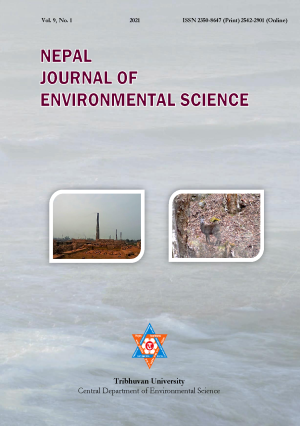Habitat preference of Himalayan musk deer (Moschus leucogaster Hodgson, 1839) at Lapchi of Bigu Rural Municipality, Gaurishankar Conservation Area
DOI:
https://doi.org/10.3126/njes.v9i1.37844Keywords:
Endangered species, human settlements, pellet group, threat, water sourcesAbstract
The Himalayan musk deer (Moschus leucogaster) is an endangered species listed in the IUCN Red List and Appendix I of CITES. It is widely but discontinuously distributed in Nepal. A Pellet sign survey was carried in April 2019 in Lapchi valley of Gaurishankar Conservation Area (GCA) in Nepal to assess the habitat preference of Himalayan musk deer. A total of 11 transects of 16348 m length and 10 m wide was surveyed. Seven Parameters: Elevation, Aspect, ground cover, distance from the water source, crown cover, rock exposure, and distance from settlement/cow sheds were recorded from the location where pellet (toilet) of musk deer were recorded to extrapolate the probable habitat map. We recorded a total of 157 musk deer pellet groups in the study area14.27 ± 2.91. The study concluded that the 38.4% (26.5 km2) area of Lapchi valley is the probable habitat of musk deer. The c2 – test suggested that the distribution of musk deer is significantly associated with elevation and aspect of the location. Musk deer mostly preferred habitat between 3600-4000 m elevations, with North-West aspect, ground cover less than 25%, and canopy cover between 25%-50%. Musk deer signs were recorded in areas with rock exposure ranging from as low as less than 25%. Distance from the water source and human settlement affect the distribution of musk deer. The indirect signs were higher near water sources and far from human settlement.
Downloads
Downloads
Published
How to Cite
Issue
Section
License
This license enables reusers to distribute, remix, adapt, and build upon the material in any medium or format for noncommercial purposes only, and only so long as attribution is given to the creator.




